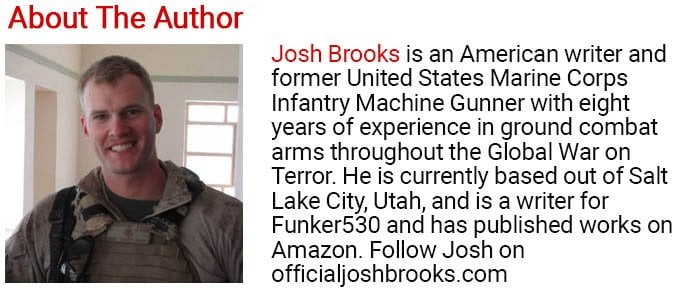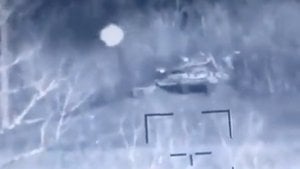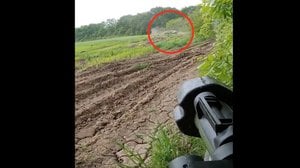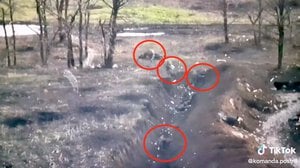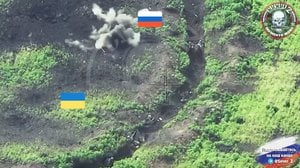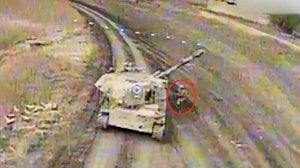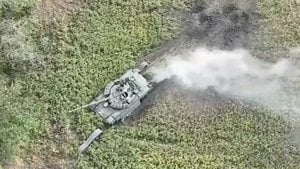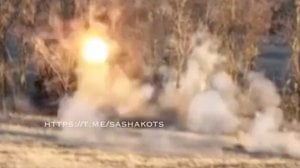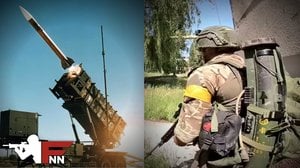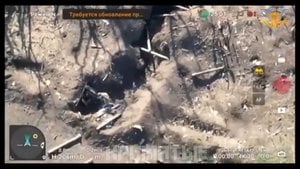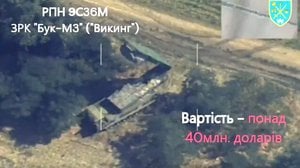
Helmet Cam: How Infantry Troops Patrol and Maneuver Under Artillery Fire
Published 1 years ago
Helmet Camera footage from Ukrainian troops conducting a security patrol through a tree-line gives us an intimate look at what it's like to maneuver under direct artillery fire.
Out of the gate on this one I'm going to go ahead and make a quick apology on this video from the Funker530 team. I know you guys come here expecting a lot of action packed combat footage, but sometimes that's just not in the cards and this video is an example of that.
At the end of the day, the objective for the entire Funker530 team and the project itself is to showcase the reality of war, and one of my favorite things to do is comment on ground combat and infantry tactics. I've chosen to blog this video, in-spite of the extra heavy compression from the source and distinct lack of direct combat action because I think it highlights some important basic infantry tactics that the average warfighter hasn't had to exercise in quite some time.
For the last twenty to thirty years of war, most combat has been conducted against inferior fighting forces. IE - combat operations where one side is a professional military with all of the gear, equipment, and training they need and the other side is a small barely or not at all trained insurgency with cobbled together equipment purchased off of a black market. On top of this, a majority of the fighting that's gone on around the world since the 1990s has been centered and focused in Middle Eastern or African nations where an overwhelming majority of the terrain and climate is desert or urban based.
Ukraine is the first time we're seeing a large scale conflict fought between two near-peer adversaries in a mostly wooded environment, and it's showing us a lot of basic infantry tactics that have been forgotten in favor of COIN and MOUT tactics. While both COIN and MOUT are probably not going anywhere in the foreseeable future, it's always important to look at evolutions on the battlefield and conduct proper realistic rehearsals to prepare ourselves for possible future conflicts.
Hopefully, war-fighting colleges and military leadership around the world are watching the situation in Ukraine and already adjusting fire on military training in other NATO-based countries. In this video, we're getting a first-person perspective of how a Ukrainian infantry unit conducts combat patrolling while they're under active shelling from Russian artillery cannons. It's interesting to watch how they move, and how the troops instinctively move from cover-to-cover as they hear the incoming Russian artillery being fired.
The presence and threat of artillery-fire should not be enough to stop security patrols that deny the enemy freedom of movement. This video is proving to us that Ukrainian forces find that statement to be true against the Russian adversaries. Freedom of movement leads to a gain in initiative by your enemy, which can quickly spiral into lost territory on the battlefield.
If you look at old field-training manuals from the U.S. or other allied nations, you'll notice that post Korea, this was something that was heavily on the minds of leadership. Throughout Vietnam and into Iraq and Afghanistan however, this started to take more and more of a backseat as immediate action drills evolved to fit with the types of combat troops were encountering on a daily basis against their less-equipped adversaries.
That said, while tactics evolve to fit the fight we're currently in, it's important not to let the lessons of the past slip away from us. Every battlefield lesson that's been placed into a training manual was learned and paid for with blood and loss-of-life. While we continue to adapt to new weapon systems on the battlefield, like the rise of commercial drones being used to spot and reinforce FIST operations, it's important that we bring those best-practices from a by-gone era back into circulation and start re-training warfighters to better prepare them for eventual and inevitable near-peer fights where the enemy is equally equipped and trained with long range indirect fire weapon systems.
Failing to do so would be short-sighted. We need to continuously train and prepare our warfighters for the next fight, not the one we were just in.
